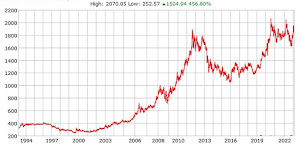Natural golden honey from the wild raw honey

Natural golden honey from the wild "raw honey"
This honey is raw honey, delicious, Wildflower honey can collect pollen alternately throughout the year. Delicate fragrance, mild sweet taste. Suitable for play or mixed in food and beverages.
“Immortality” is the incomparable miracle of honey. No matter how many centuries have passed or changed the era, but ""raw honey"" can survive with many nutrients as before but will change from the original condition such as darker color, more viscous, and the taste changes over time.But did you know that These “changes” over time are a “good sign” because they indicate that this is “raw honey” that has not been pasteurized. Because pasteurization destroys the natural yeast in honey. This is a treatment to keep the color of the honey bright longer than usual. but it destroys many nutrients from natural honey a lot.
So if it's ""Raw Honey"", you don't have to worry about the ""expiration date"" on the bottle. Most honey will last much longer than the expiration date on the label, so don't worry about it. ""The older it is, the more valuable it is""
What is raw honey?
Raw honey comes directly from the beehives and goes through minimal processing. In its truest sense, raw honey is taken directly from the honeycomb, untouched by human hands and with nothing added. This type of honey can also be called raw unfiltered honey.
What is fake honey?
Fake honey is the term used for honey-like products that contain non-bee products, such as glucose syrups, inverted sugar solutions (from refined sugar) or corn, cane or beet syrup.
Many of the ‘honey’ products being imported into Australia are, in fact, not honey. In 2016, the Australian Honey Bee Industry Council (AHBIC), tested honey imported from Asia proving it to be C4 sugars (likely corn syrup) rather than the honey sugar classification of C3. Check out “When Honey Isn’t Honey” for the full report.
While fake honey may look like raw honey, the key difference is that it is made in a factory, rather than by nature. Fake honey also:
contains a mix of bee honey and cheaper cane or other syrups, added to increase the volume of the honey, reducing the production cost and price;
often has a high composition of water diluting the honey, again used to increase the volume of the product and hence profits; and
has added artificial or synthetic ingredients such as dyes and flavour enhancers.
Fake honey will not have the natural flavour, texture and aroma of real honey. In fact, fake honey can have a sour odour or no smell at all, and usually contains refined sugars.
Most importantly, fake honey does not have the same health benefits of pure honey.
Originally, people would have used raw honey, but today, most honey on supermarket shelves is processed, usually through pasteurization, which involves intense heating. Many of these processed types of honey may contain added sugars.
Raw honey tends to have more variation in color and texture than regular honey. The color of raw honey may change depending on what flowers the bees pollinated.
While no large studies have confirmed that raw honey is more nutritious than regular honey, some small studies suggest that raw honey may offer extra health benefits.
How to find raw honey
To find raw honey, look for products that say “raw” on the label. Products labeled as “organic” or “pure” may not necessarily be raw.
The appearance of the honey product can help a person work out whether it is raw. Regular honey looks very clear and smooth, while raw honey tends to have a mixture of colors and a cloudy or creamy appearance.
Raw honey is widely available in stores and at farmers’ markets. People can also choose between brands of raw honey online.
Raw honey may crystallize more quickly than regular honey. Placing the jar of honey in a pot of hot water will melt the crystals and turn it liquid again. Be careful not to overheat the honey, as this may destroy some of its nutrients.









0 ความคิดเห็น: